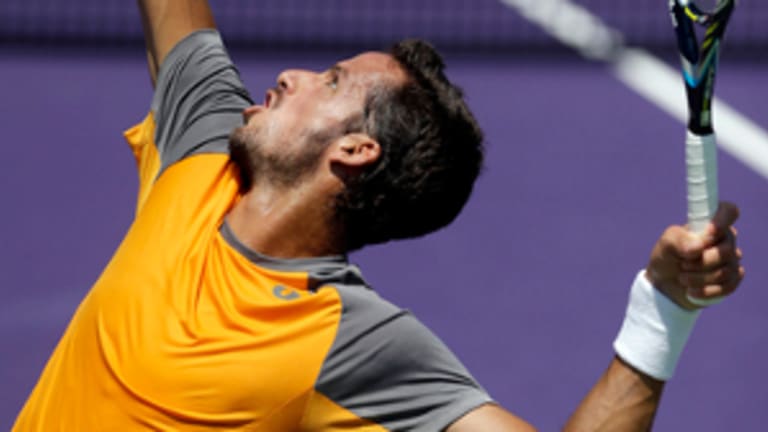March is “Fifth Grand Slam” season in tennis. Once upon a time, it was the tournament in Key Biscayne—then known as the Lipton, now known as the Sony—that regularly received this de facto promotion. These days, it’s the tournament in Indian Wells that feels more major with each passing spring.
Neither event has done anything to discourage the comparison, of course. While it can be hard to tell exactly when they begin—Miami and Indian Wells both kind of drift to the starting gate—each takes up a full two weeks of the ATP and WTA calendars, just like the Slams. Each is dual-gender, each is mandatory, and each awards something close to equal prize money to the men and women, just like the Slams. And after years of slow expansion, each now seeds 32 players, just like the Slams.
Bigger is generally better when it comes to tennis tournaments, but it’s the last fact that takes the imitation too far. The majors have been rightly criticized for jumping from 16 to 32 seeds a decade ago. While the move has had a small role in creating the current “golden age” of top-down dominance on the men’s side, it has also eliminated most of the suspense from the first two rounds and offered unnecessary protection to the game's stars. Both of these things are even more true in Miami and Indian Wells. At least the Grand Slams have full 128-player draws, where anyone who wants to be the champion must win seven matches to do it. The spring Masters have just 96 players, which means the Top 32 entrants not only enjoy the protection of being seeded, they get a bye straight into the second round.
With that many big names skipping ahead, there’s precious little left for even dedicated tennis fans to get excited about in the first round. If I had previewed Key Biscayne, the only women’s contest to earn a “First-round match to watch” designation might have been the May-December battle between Donna Vekic and Kimiko Date-Krumm; the only men’s first-rounder to watch might have been Nikolay Davydenko vs. Adrian Mannarino, and that's only because I happen to like relatively unknown Mannarino’s game. If 16, rather than 32, players had been seeded, men like Kei Nishikori and Ernests Gulbis, and women like Flavia Pennetta and Eugenie Bouchard, would have been featured in the first round.
While Key Biscayne and Indian Wells bill themselves as two-week events, the way they’re arranged now the first week serves mostly as an extended promotion for the second. The top players swim with the dolphins in Miami and hit the golf courses around Indian Wells before finally getting down to business on Friday and Saturday—this year in Miami, Rafael Nadal played his first match late Saturday night.
As a fan, I don’t mind the week’s break between these two very similar events; even now, it can feel like overkill to gather everyone for a big tournament in California, and then have them do it all over again in Florida (if either event ever becomes the “Fifth Slam,” the first step will be to get the other one out of its way). For lower-ranked players, March can brutal; there are only two tour events where they can earn money and ranking points.
In that sense, Indian Wells and Miami play a role in entrenching two recent trends in tennis: The domination by a few players at the top, and the aging of the tours. If you’ve established yourself in the Top 32, you reap the rewards in March. You avoid playing anyone ranked above you until the third round, and you’re guaranteed $15,000 in prize money. But if you’re not in the Top 32 and you go out early or fail to qualify, you’ve got time to kill, or a Challenger event to find. The bottom line is that you’re not getting richer or rising in the rankings.
